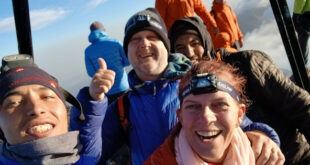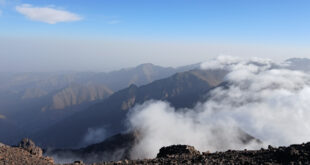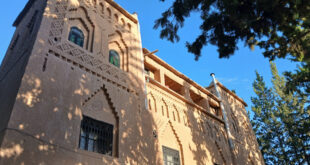Having recently returned from Nepal where we successfully trekked to Everest Base Camp, here are my top tips to help you improve your chances of a successful Everest Base Camp trek. These are all designed to keep you in optimum health to ensure the best chance of success. We travelled with Action Challenge, who have an excellent record of getting people to Base Camp. Not all companies have the same pedigree or a doctor on the team who can provide advice in relation to acute mountain sickness.
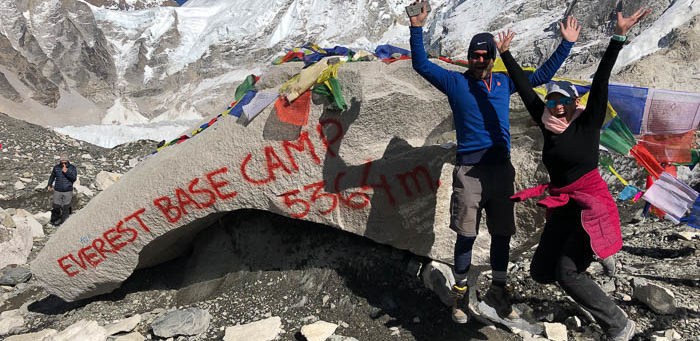
11 Tips for a successful Everest Base Camp Trek
Packing
Pack everything in plastic bags. It makes it super easy to unload and repack your backpack. When you get to your teahouse after a long day of trekking you will not want to waste energy on unpacking everything. Furthermore, as you ascend and it becomes cooler, you will want packing to be as quick and easy as possible.
We bought Web-tex resealable bags and waterproof pouches from Amazon and they were brilliant. Although they were falling apart by the end of the trip, they helped to make it easy to find things and kept clothes free of damp. These may sound like minor points, but when you are cold and tired (and possibly ill) you will be grateful for anything which saves time and energy.
Take poles
The ground is often uneven and boulder-strewn. Poles will help you keep your balance on unstable rocks and help take some of the strain out of your legs. I bought poles like these which were adjustable and lightweight.

I used them every single day and they really helped ease the pressure on my knees on the descent. They also provide additional confidence in wet or snowy weather conditions.
Be sure to purchase poles which are adjustable to adapt to different conditions.
Hydration
Drink 4-5 litres of water a day. This is quite difficult, even for someone like me who drinks a lot. It is much easier to drink regularly if you use a bladder such as the Osprey Camelbak. You will need to sip almost continually to drink what your body requires and this is more convenient than a drinking bottle.
Degbit water bottles are also useful for mealtimes and in the evening as you can refill them and keep them close to your bed.
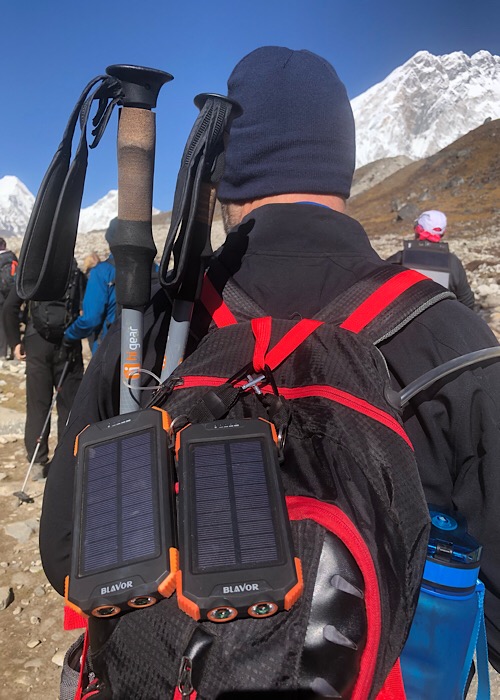
Don’t be surprised if you find it harder to drink as you ascend. I occasionally felt so out of breath that I was almost paranoid to take a drink.
Rest
Rest is essential. Whilst you do not cover large distances at first, altitude increases the demands on your body and small tasks can become tiresome.
I seemed to struggle more than most in our group with altitude sickness and really doubted whether I was going to make it. I even sacrificed socialising and exploring because my focus was on getting to Base Camp successfully. My life became a simple cycle of sleep, walk, eat, walk, rest, eat, sleep.
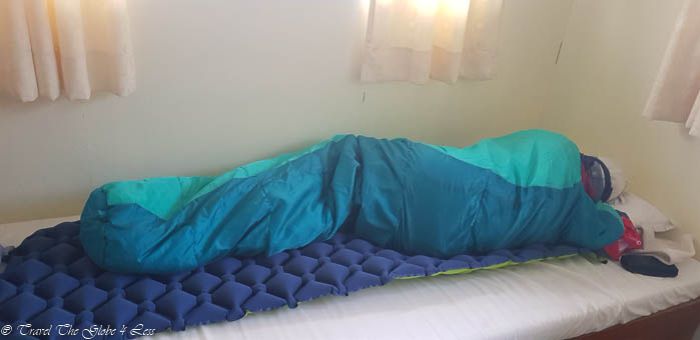
Also, be aware that the distances you walk increase as you descend. Your body will need every ounce of rest it can get to prepare for this increased workload.
Unlike a mountain summit, trekking to Everest Base Camp is a constant cycle of ascents and descents in both directions. The return leg is just as hard as the ascent. Although you do not have the issue of increasing altitude, you will be walking longer distances.
Take altitude sickness medicines
Take paracetamol over ibuprofen as it minimises the altitude headaches better. For the first few days, I was taking ibuprofen which was having no impact at all. As soon as I switched to paracetamol the headaches started to ease.
Also, don’t be surprised if you find that you socially withdraw as the symptoms of altitude sickness intensify. I found it hard to join in group banter when I simply did not feel myself.

Please note, I do not offer any further advice in respect of altitude sickness as I am not a doctor. If you really want to be certain of securing the correct advice, I recommend you travel with an operator (such as Action Challenge) that includes a doctor as part of their package. That way, you will not take any risks should symptoms present. You should also seek advice from your own doctor before you travel if you have any allergies to medicines.
Avoid alcohol
It may surprise you to discover that almost all teahouses sell alcohol and in Namche there is even a selection of bars. We didn’t drink at all until day 10 as we wanted to give ourselves the best chance of success in reaching base camp.
Imagine if you drank and didn’t make it successfully to Everest Base Camp. Maybe you would be wondering if you would have made it had you not had a drink!!

Forget the diet
Your goal on an Everest Base Camp trek is to reach the camp. To do this, you are going to burn a hell of a lot of calories. If you also get sick, as we did, you will lose further valuable energy.
Unless you bring your own snacks (I recommend these Maxi-Muscle snacks) you will live on a diet of Bounty and Mars Bars plus noodles, fried rice and Dahl baht. Simple maths dictates that you need to fuel your body with more calories than you will burn through trekking so you cannot afford to be picky. Find something you like, no matter whether it is something you would normally avoid at home and fuel at every opportunity.

Although I was really sick and weak one day, I forced myself to eat bowls of porridge to recover my strength for the final push. I knew I simply had no choice if I was to make it!
Note, it is also not uncommon to lose your appetite at altitude. Many of our group lost their appetite at altitudes over 4,000m. This is not ideal when you are expending significantly greater energy than normal, hence why such snacks can be invaluable. If you can fit them in your bags, I’d encourage you to bring protein and sports energy snacks as these will be much better than the chocolate bars we were snacking on.
Hygiene
Pack toilet paper in individual freezer bags with Clinell Antibacterial Hand Wipes and a travel size antibacterial hand cleaner from Amazon. These were invaluable for wiping loo seats, cleaning hands, wiping cutlery and for many other uses.
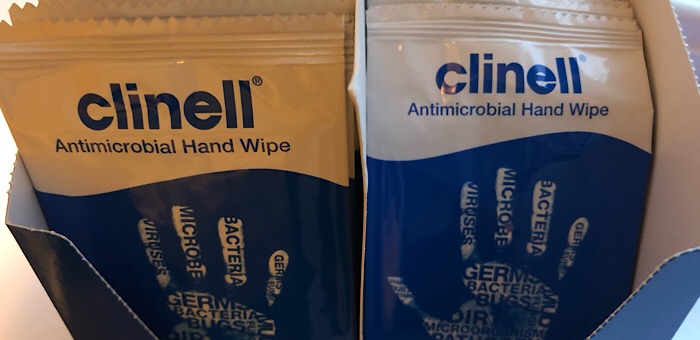
If you take Diamox for altitude sickness, you will also go to the toilet more in the night. It pays to be prepared with your toilet bag, antibacterial wipes and hand cleaner by your door so you can easily find them in the dark.
Other than in Namche, Pheriche, and Lukla, our bathrooms were communal but western style. Bathrooms often do not have traditional flushes. Instead, there will be a large trough of water and a bucket that you fill to flush. It would also be appreciated if you could wipe the seat after your use as frankly the toilet habits of some guests were pretty appalling.
Avoid meat
Avoid meat as there is no way of knowing how well preserved it is. Any meat has to be transported through the valley on someone’s back which can take days.
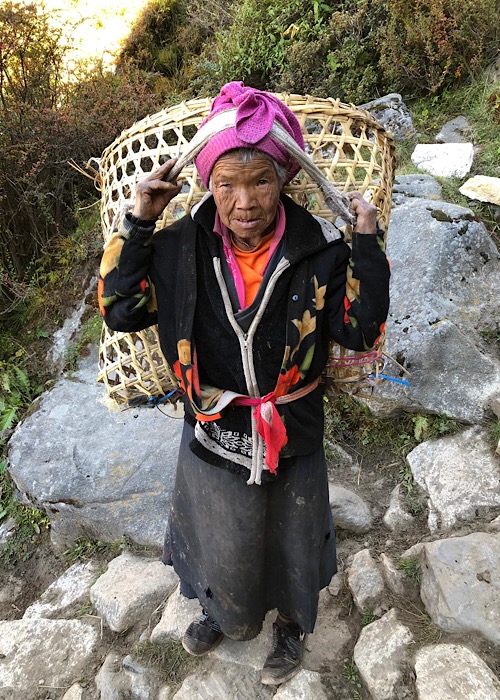
Whilst there is no guarantee that this tip will ensure your health, it is one less risk you can take!
Walk slowly
Avoid the urge to go fast. It’s exhausting. Sometimes one small step feels like running a mile so it’s important to preserve energy where possible.
John, our guide, also had great tips for navigating the mountains. He demonstrated this by explaining that if you did ten high kicks with a personal trainer that would tire you more than ten small steps. He suggested that when climbing we should look for routes that allow you to take small steps upwards even if this means zigzagging. I was astonished by how much difference this made.

Don’t cut costs
I cannot emphasize this enough. There will always be a cheaper company offering an Everest Base Camp trek but to do it on the cheap, they have to cut costs somehow.
We saw helicopter after helicopter flying through the valley to evacuate people with acute mountain sickness. This is often because companies do not build in sufficient acclimatisation time and rush to get people up and down the mountain.
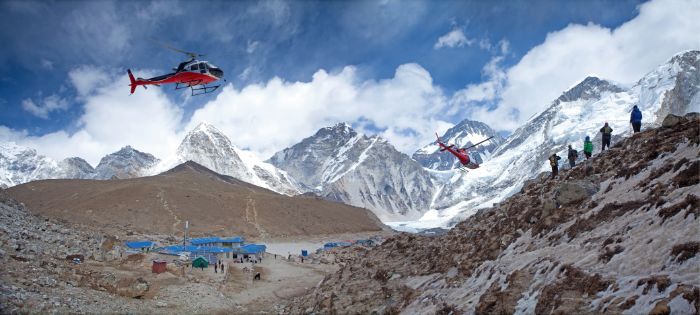
Our trip to base camp took 8 days plus the time to descend. It included two rest/acclimatisation days and without them, I think I would have found it almost impossible to reach Everest Base Camp.
Do not take the risk with your health and sabotage your chances of reaching base camp for the sake of a few hundred dollars.
Other tips for a successful Everest Base Camp trek
Maybe you have been to Everest Base Camp and have some other ideas about what would be useful.
If so please feel free to comment in the box below. I would love to hear from you.
Our Everest Base Camp route
Here is the route that we took with Action Challenge.
 From Miles to Smiles Stylish travel for professionals seeking luxury at affordable prices
From Miles to Smiles Stylish travel for professionals seeking luxury at affordable prices
